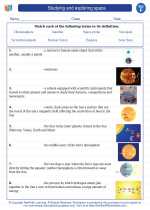Ice-Covered Ocean
An ice-covered ocean is a body of water that is partially or completely covered with ice. This phenomenon occurs in polar regions, such as the Arctic and Antarctic, where the temperatures are cold enough for the ocean surface to freeze.
Formation of Sea Ice
Sea ice forms when the surface temperature of the ocean drops below the freezing point of seawater, causing the water to solidify into ice. This process is influenced by factors such as air temperature, ocean currents, and salinity of the water.
Types of Sea Ice
There are several types of sea ice, including:
- First-year ice: Ice that forms and melts within a single year.
- Multi-year ice: Ice that persists through several melting seasons.
- Fast ice: Ice that is attached to the coastline or seafloor, remaining stationary.
- Pack ice: Floating ice that forms when sea ice breaks apart and drifts with ocean currents.
Impact on Ecosystem
The presence of ice-covered oceans has a significant impact on the marine ecosystem. It affects the distribution of marine species, influences ocean circulation patterns, and provides habitat for ice-dependent organisms such as polar bears, seals, and certain species of birds.
Human Activities
Ice-covered oceans also have implications for human activities, including transportation, resource extraction, and scientific research. The presence of sea ice can pose challenges for ships navigating through icy waters, while also offering opportunities for accessing natural resources in polar regions.
Study Guide
Here are some key points to consider when studying ice-covered oceans:
- Describe the process of sea ice formation and the factors that influence it.
- Identify the different types of sea ice and their characteristics.
- Explain the ecological significance of ice-covered oceans and the adaptations of organisms to this environment.
- Discuss the impact of ice-covered oceans on human activities and the challenges and opportunities they present.
- Compare and contrast the characteristics of ice-covered oceans in the Arctic and Antarctic regions.
◂Science Worksheets and Study Guides Sixth Grade. Studying and exploring space

 Worksheet/Answer key
Worksheet/Answer key
 Worksheet/Answer key
Worksheet/Answer key
 Worksheet/Answer key
Worksheet/Answer key
 Vocabulary/Answer key
Vocabulary/Answer key
 Vocabulary/Answer key
Vocabulary/Answer key
 Vocabulary/Answer key
Vocabulary/Answer key
 Vocabulary/Answer key
Vocabulary/Answer key
